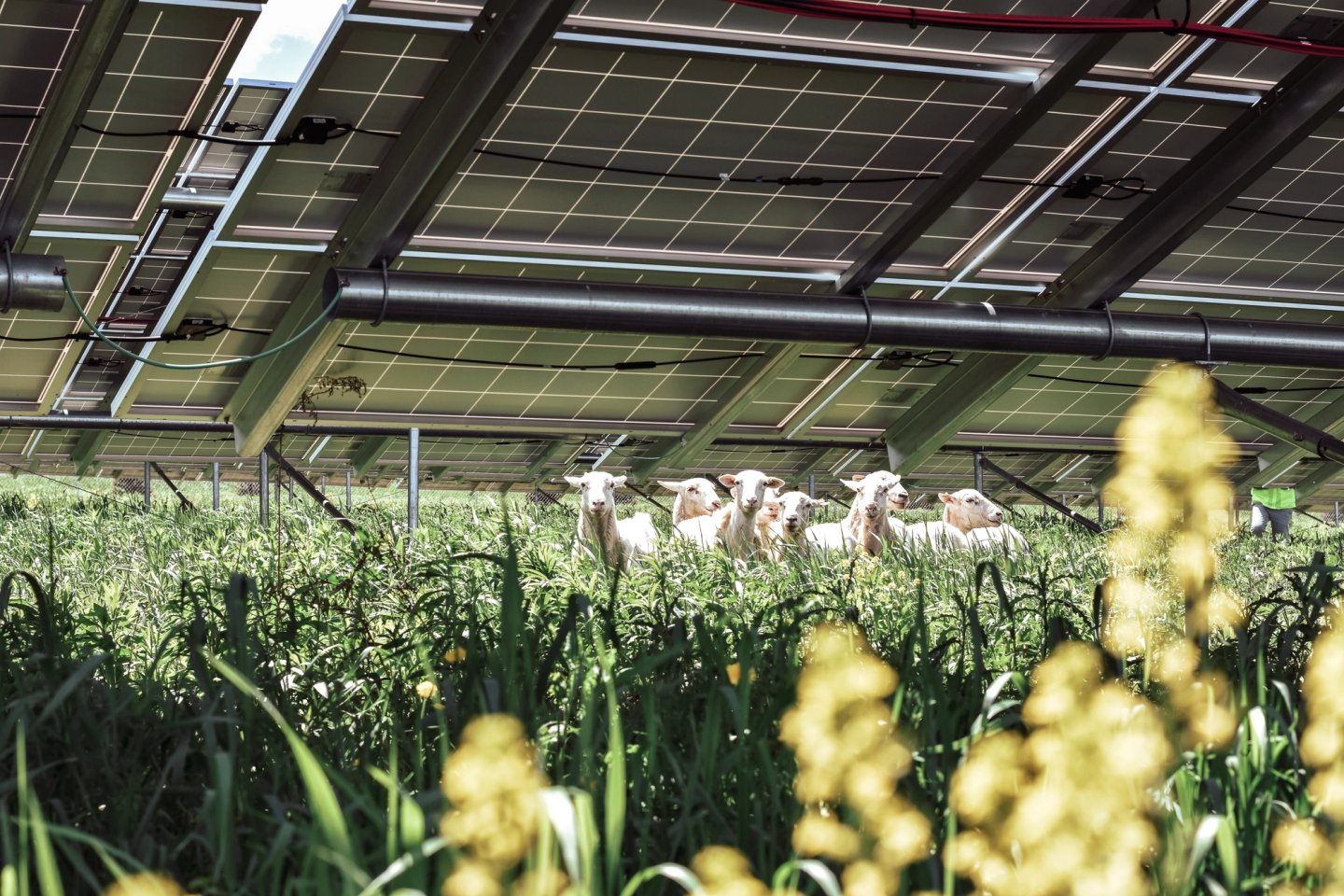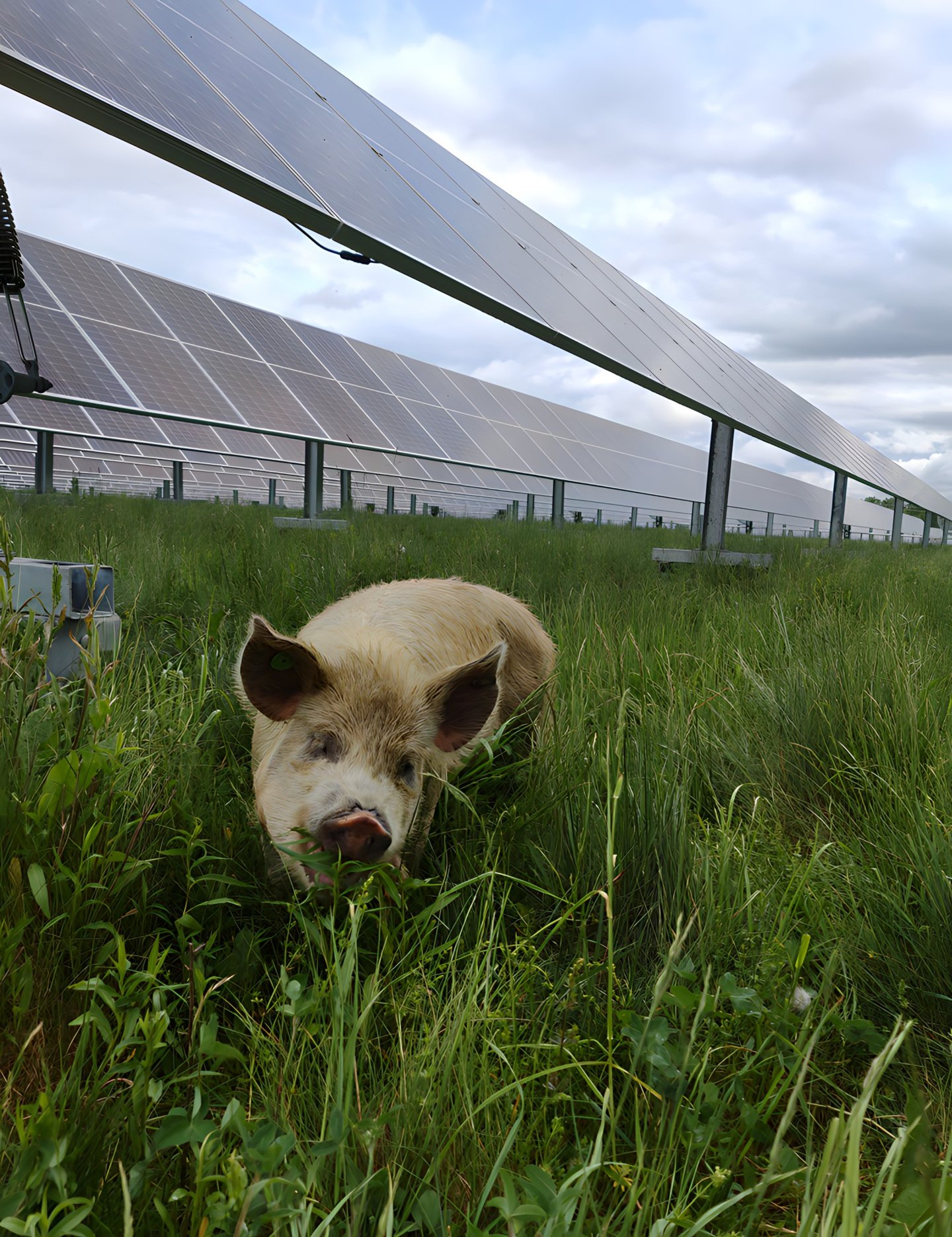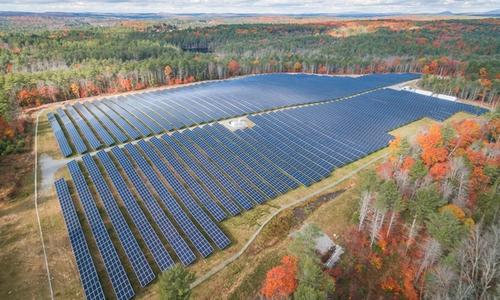As the clean energy industry continues to grow, new innovations are taking root—literally! Agrivoltaics is one such advancement: the dual use of land for both agriculture and solar energy generation. With community solar, agrivoltaics represents a powerful and efficient approach to maximize land productivity while strengthening the local grid with clean energy.

What is agrivoltaics?
Agrivoltaics involves installing solar panels above or around crop fields or livestock grazing areas. This dual-use solar strategy allows a single plot of land to serve two essential and simultaneous purposes—agriculture and energy production. It’s an elegant answer to land-use challenges, especially in areas facing development pressure or limited open space.
The benefits of agrivoltaics include:
Reduced water usage: Solar panels provide partial shading that lowers soil temperature and reduces evaporation, improving water retention.
Microclimate creation: The shade creates a cooler, more stable environment that protects sensitive crops from extreme heat.
Supplemental income for farmers: Leasing land for solar provides reliable, long-term income to offset unpredictable farming revenues.
Increased land productivity: Agrivoltaic sites generate clean energy while continuing agricultural operations, doubling the value of each acre.
How community solar enhances agriculture
Community solar farms have become valuable assets across the United States. Through community solar, households and businesses can subscribe to a share of a local solar farm and receive credits on their electric bills—without any upfront costs or the need to install rooftop panels. This is an ideal solution for renters, apartment dwellers, or anyone whose property isn’t suitable for solar.
When these solar farms are designed with agrivoltaics in mind, the benefits grow even further:
Expanded solar access: These projects make clean energy available to more people—including renters and those without solar-ready rooftops—while supporting local agriculture.
Farmland preservation: Agrivoltaics keeps land in agricultural use, rather than converting it entirely for energy production. Farmers benefit from stable lease income while clean energy is added to the grid.
Local grid support: On-site energy generation enhances grid reliability and provides cost-efficient power, especially during peak demand periods.

Nexamp’s approach to agrivoltaics
At Nexamp, we take a multi-faceted approach to agrivoltaics. From planting native pollinator vegetation to grazing livestock under solar arrays, we’re committed to maximizing land use efficiency and ecological benefit.
Sheep and pig grazing
We work with farmers today to graze sheep and pigs on 78 solar farms across five states, a number that is growing every season. Our sheep are highly efficient—consuming 3–4% of their body weight in vegetation per day. These grazing animals help us prioritize land dual-use by maintaining vegetation beneath solar arrays while receiving shelter from the sun and rain.
The benefits of hosting grazers include:
Reduced mowing costs: Solar grazing eliminates the need for gas-powered equipment or herbicides, lowering both operational costs and environmental impact.
Improved mowing safety: Using sheep means a lower risk for damage that can occur when mowers kick up stones or run into support structures.
Supporting beneficial vegetation and soil health: Sheep prefer invasive weeds, giving native plants room to flourish. Meanwhile, pigs naturally till and fertilize the soil, creating better growing conditions for future vegetation.
New income opportunities for farmers: Solar grazing partnerships provide a steady income stream, especially in rural areas. Fencing ensures animals remain safe, while solar panels offer them natural shelter throughout the day.
Pollinator vegetation
In addition to grazing, we plant native pollinator species—such as low-growing wildflowers—beneath and around solar panels on many of our sites. These plants support bees, butterflies, and other pollinators critical to local agriculture and ecosystems. By designing pollinator-friendly solar farms, we make every acre work harder—for energy, biodiversity, and food systems.
Real savings, real sustainability
Agrivoltaics is a win-win solution. Community solar subscribers typically save 10–15% on their annual electricity bills. Now, those savings also support local agriculture, biodiversity, and land preservation.
Farmers no longer need to choose between growing food, grazing livestock, and generating clean energy. With agrivoltaics, they can do it all while supporting energy independence and earning supplemental income.
As energy prices rise and land availability shrinks, dual-use solutions like agrivoltaics become critical to a resilient, sustainable future. This approach supports communities through clean energy access, economic opportunity, and food system security—all on the same land.
With over 1 gigawatt of clean energy projects in operation or under construction, and several more gigawatts in development, Nexamp is proving that innovation doesn’t require compromise. Clean energy and agriculture can, and should, coexist.
Ready to make an impact?
Whether you’re a landowner interested in hosting an agrivoltaic solar farm or a resident looking to lower your energy bills, get in touch with us!
🌱 Learn how to host a solar farm: nexamp.com/host-a-solar-farm
☀️ Join a community solar farm: nexamp.com/blog/guide-to-community-solar


